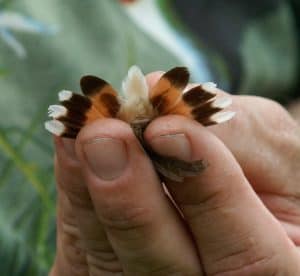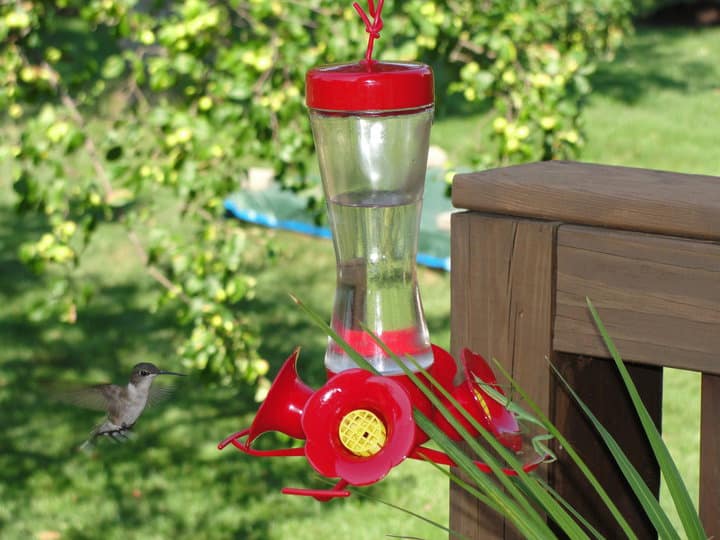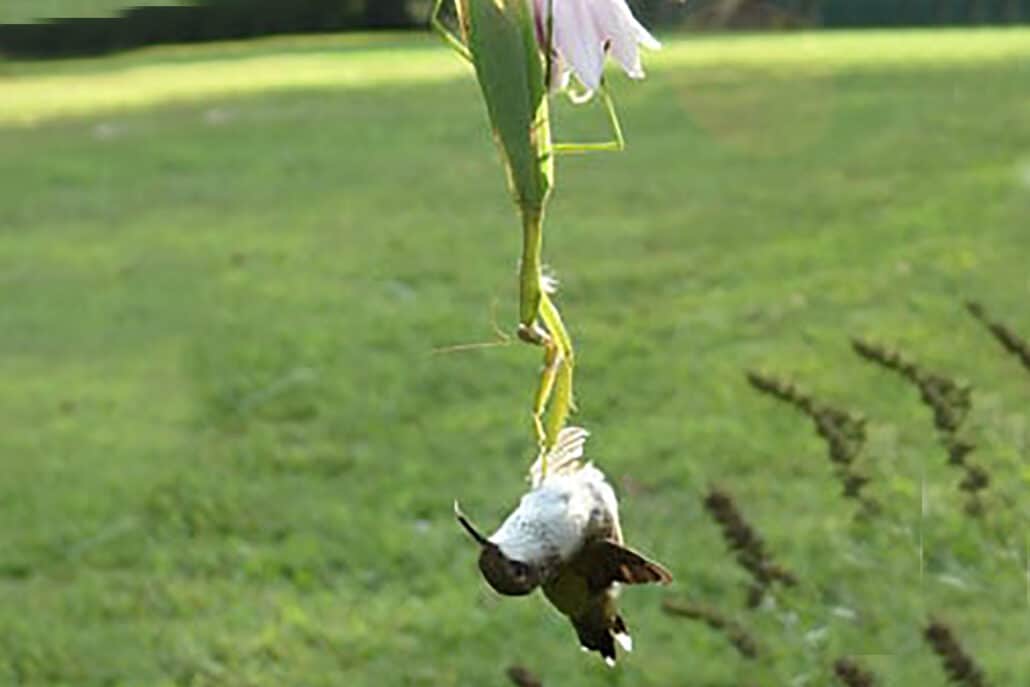I always recommend that bird watchers looking at an unfamiliar bird start at the top of the bird’s head (or tip of the bill) and visually work their way down the body and back toward the tail, noting any obvious field marks. This works for hummingbirds, too. For most North American bird species, the key field marks (unique physical features used for identification) are located on the top or front half of a bird—above the mid-way point.
Here are a few easy steps to help you identify a hummingbird.
Location
Where, geographically, you are seeing the bird is very important. Only one species, the ruby-throated hummingbird, spends summers in the eastern half of the United States. If you are trying to identify a hummingbird in Tennessee in July, it’s almost certainly a ruby-throated. In the West, and particularly in the Southwest, there are many more hummingbirds to identify. Check the range maps in your field guide to see what species are found in your region in any particular season.
In fall and winter, a stray hummingbird can show up almost anywhere, so it’s good to bear this in mind when looking at late-season birds.
Sex
All of our widespread hummingbird species are sexually dimorphic, meaning that adult males and females look different from one another. In most cases the males sport brighter colors, especially on the gorget. Determining the sex of a hummingbird you are trying to identify can help you narrow down the possibilities. If a bird has an obvious gorget, it’s likely to be a male. Knowing which hummingbird species are commonly found in your region then can narrow the possibilities further.
A word about gorgets: On male hummingbirds, the iridescent feathers on the throat (called the gorget) are probably the most noticeable field mark. However, as we’ve discussed earlier in this book, these gorget feathers get their color from the way they reflect sunlight. So most of the time they will appear dark to your eyes. Watch a male hummingbird for a few minutes and you are almost certainly going to get a flash of the gorget feathers as they reflect sunlight. Note the color and the placement of the color on the hummer’s throat or head.
Juvenile hummingbirds (those born in the same nesting season in which you are seeing them) are often the most difficult birds to identify. They lack many of the field marks of the adults—even young males will have almost no noticeable gorget feathers.
General Impression
Take a moment to look at your mystery hummingbird and gather a general impression of its overall size and shape. Is it larger or smaller than other birds and hummingbirds present? What are the proportions of its bill and tail to its body? Is it exhibiting any unusual behavior, such as tail flicking or any notable vocalizations? Is it highly aggressive toward other birds? The answers to these questions, combined with any physical field marks you note should be valuable clues to a positive identification.
Bill Color, Shape, and Length
Most of our North American hummingbirds have black, relatively straight bills. A few have longer, curved bills, and some hummer bills are two-toned in color—usually red or orange with a black tip. While bill color isn’t the first field mark to look for, if the bill has color it should be an obvious clue.
Tail Shape and Color

As you work your way to the bottom of a mystery hummingbird, looking for field marks, the tail should not be overlooked. The shape and size of the tail can be good clues, as can the amount of white present on the feather tips. Rufous, Allen’s, and buff-bellied hummingbirds have mostly rufous tails. Lucifer, violet-crowned, and broad-billed hummingbirds all have notched tails. Black-chinned hummingbirds pump their tails while hovering, but the similar ruby-throated hummingbird holds its tail still. There are many other subtle field marks in the tails of hummingbirds, so don’t give up your search for clues until you reach the “tail end!”
Sounds
Hummingbirds can be quite vocal creatures. Most give some basic chip notes or call notes, but some, like the male Anna’s hummingbird, sing actual songs from a territorial perch. Hummingbirds also produce sound with their wings. This is usually described as a high trill or ringing buzz. Some males produce these sounds only in swooping courtship flights performed for females. Males of other species, including broad-tailed, Allen’s, and rufous, produce a high, buzzy trill with their wings whenever they fly.
Confusingly Similar
Like the aforementioned black-chinned versus ruby-throated ID challenge, or the even tougher Allen’s versus rufous hummingbird (and that’s just the males! Females are tougher still), some hummingbirds are nearly impossible to identify based on field marks viewed from a distance. In fact, when a vagrant rufous or Allen’s shows up at a feeder in the East or Southeast, hummingbird banders are sometimes called in to capture the birds to view them in the hand, which is one of the only ways to get a positive ID. There are minute differences in the notching on the central tail feathers which are most easily seen in the hand.
So don’t be discouraged if you find yourself unable to identify a hummingbird that offers few clear field marks. It happens, even to the experts.
Just Plain Weird
Every individual hummingbird is unique, and sometimes this uniqueness shows in their plumage and behavior. For years we had a male ruby-throated in our yard that had one drooping wing—probably the result of an accident. We could always identify “Droopy” as an individual. Plumage anomalies are not very common, but discoloration from pollen or other things encountered in the environment is normal. Part of the natural relationship between hummers and flowering plants is that the birds help distribute the flowers’ pollen from plant to plant. It is quite common to see an otherwise normal hummingbird with a bright orange or yellow crown—something you won’t find in most field guides. This is most likely to be pollen from a plant the bird has recently visited.
If you see a hummingbird that looks just plain weird, try to look beyond the weirdness to its essential hummingbird-ness—the subtle clues that will help you to solve the mystery of its identity. It’s probably not a species new to science, but if it is, good for you. And since you cannot name a species you’ve discovered after yourself, I’ll let you name it after me. Thompson’s hummingbird has a nice ring to it, don’t you think?
Happy hummingbird watching!




